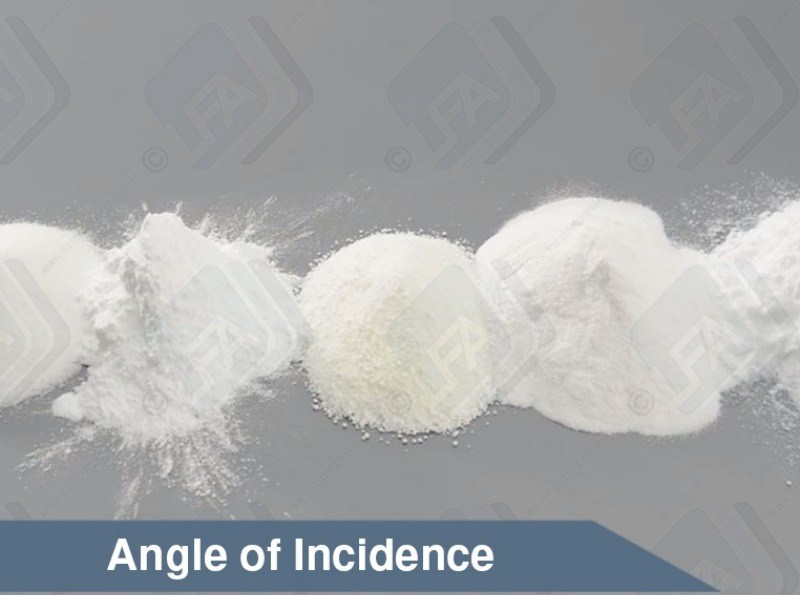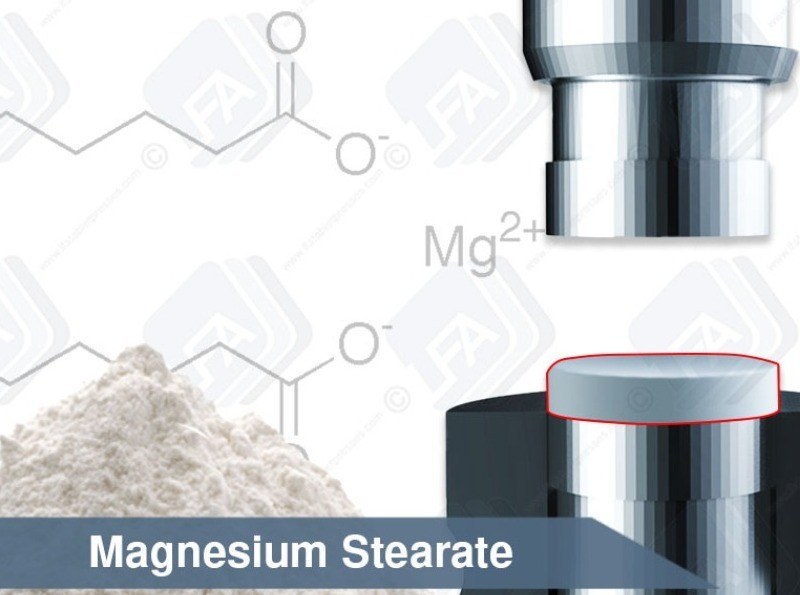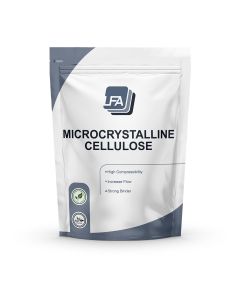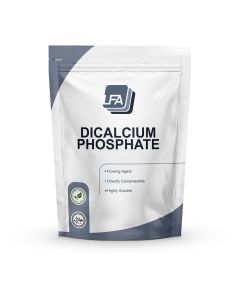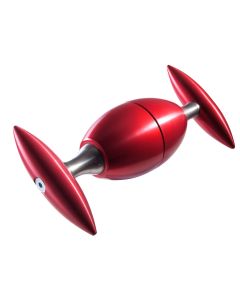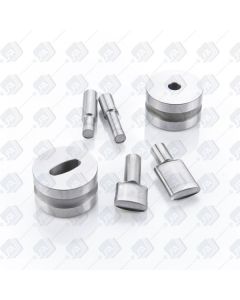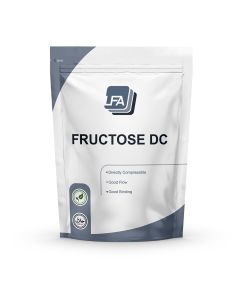Estearato de Magnesio
- Excellent Dry Lubricant
- White Powder
- Anti-Adherent
El estearato de magnesio es un fino polvo blanco. Su principal función es la de lubricar cápsulas y tabletas. Mejora la fluibilidad, asegurando un proceso de fabricación eficiente.
El estearato de magnesio es uno de los agentes fluidificantes más populares de la industria. Es muy popular debido a su eficacia como lubricante seco. Es inerte, y puede facilitar mucho su proceso de formulación.
El estearato de magnesio es una sal de magnesio que también tiene ácido esteárico. El ácido esteárico es una grasa saturada con carbono 18 que se encuentra a menudo en la comida. Los estearatos son parte natural de la grasa de cualquier tipo, ya sea vegetal o animal. Es un ácido graso que se encuentra fácilmente en el pescado, cereales, huevos, mantequilla, aves de corral, carne y productos lácteos. Supone un tercio de la grasa saturada de la carne. Esto es importante para el conocimiento del consumidor. Tambien da fe de la seguridad del ingrediente. No es algo nuevo para el cuerpo humano. Es un elemento que añade seguridad a su producto.
¿Por qué utilizar lubricantes?
Los lubricantes son cruciales en el tableteado. Por esto se utiliza tanto el estearato de magnesio. El objetivo del lubricante es mejorar los beneficios específicos del proceso. El lubricante tiene tres importantes funciones.
Un buen lubricante formará una capa fuerte en la superficie. Otro factor positivo es que no se ve afectado por cambios en las variables del proceso. Las variables del proceso son una parte dinámica del mismo que pueden cambiar de forma determinada. Estas variables son, generalmente, flujo, presión y temperatura. Si alguno de estos cambios se presenta, no debería afectar a su proceso de producción.
El magnesio es importante para la salud. Es un mineral esencial, que falta a menudo en la dieta humana a pesar de encontrarse en muchos alimentos. Ayuda a mantener los niveles correctos de azúcar en sangre y presión arterial. Ayuda a la formación de proteínas y ADN, y mantiene los músculos y nervios en correcto funcionamiento. Las mujeres necesitan unos 320 miligramos en su dieta diaria, y los hombres necesitan 420 miligramos para mantener un nivel óptimo.
El estearato de magnesio es:
Manejo del estearato de magnesio
Los estearatos pueden elaborarse por hidrogenación (tratamiento con hidrógeno). El resultado del proceso es un producto que debe ser manejado correctamente.
El estearato de magnesio no puede mezclarse con aire, ya que podría ocurrir una explosión de polvo. Debe mantenerse alejado de las llamas. Si está seco, se puede cargar electrostáticamente con los movimientos de vertido, giro y otros. Puede causar tos si es inhalado, y vómitos si es ingerido. Use guantes, gafas protectoras y mascarilla durante la manipulación de este producto.
La fórmula química del estearato de magnesio es Mg(C18H35O2). Otros nombres del estearato de magnesio son ácido octadecanoico y sal de magnesio.
Este producto es, generalmente, la mejor elección como lubricante seco. Además, es un mineral apto para alimentación humana que se puede consumir con seguridad de forma regular. Es el excipiente perfecto para su producto.
| Nombre | Valor |
|---|---|
| Número CAS | 557-04-0 |
| Fórmula molecular | Mg(C18H35O2)2 |
| Apariencia | Polvo blanco ligero |
| Estado fÃsico | Sólido |
| Almacenamiento | Almacenar a temperatura ambiente |
| Punto de fusión | 200 ° C |
| Densidad | 1,026 g/c |
| Peso molecular | 591,27 g/mol |
| Documentos |
Datos de intolerancia Especificaciones técnicas |
| Net Weight (kg) | 1.1 |
Yes, it does not matter what age, size or sex the person consuming the products is. It is, however, important to check the intolerance data.
Yes, all of the excipients are safe for human or animal consumption. There are some precautions that should be taken when handling them and there are some people that might have intolerances to some of them. Information on this can be found in the products MSDS and Intolerance Data Sheet. This can be found in this section for every excipient.
Sí, todos nuestros excipientes son extraídos de fuentes naturales. Para obtener más información, por favor visite las páginas de los productos individuales.
Yes, we have bulk pricing for all of our excipients, and these can be found in this section. We offer bulk in 500 kg, 1 ton, 2 ton and 5 ton lots. The prices are set on these quantities as these are the amounts that will fit on pallets.
Yes. CoA stands for Certificate of Analysis this is also known some times as an MSDS (Material Safety Data Sheet) all of the information contained in a CoA is inside the MSDS for every LFA product which is emailed to you after purchase.
Es poco probable que usted sea capaz de producir tabletas sin usar excipientes. Ciertos productos se unen sin excipientes, pero luego no fluyen a través de la máquina. Le recomendamos que utilice Firmapress porque funciona con el 99% de los productos
Yes. There are two things at play here. You can get hygroscopic and hydrophobic excipients. Hygroscopic means that they take on water quickly, while hydrophobic means that they repel water.
There are products know as supper disintegrants. These products help the breakdown of tablets. At the moment LFA does not sell any supper disintegrants.
Magnesium stearate is hydrophobic this means that it will slow the breakdown of a tablet.
However, it is used in such small amounts that most of the time it will not make a difference to our customer's products. If they would like to be sure then they should conduct what is known as a disintegration test.
Firmapress - 2 years form batch date.
Dextrose - 3 years from batch date.
Dicalcium Phosphate - 3 years from batch date.
Microcrystalline Cellulose -
Magnesium stearate -
Lactose - 2 years from batch date.
Silica Dioxide - 2 years from batch date.
here are 6 steps that should be followed as a general rule of thumb when cleaning contact surfaces that have come into contact with powders:
Dry Clean - First you need to remove as much of the dry powder as possible. You can do this using a hover/vacuum. Make sure that the vacuum you are using has a filter good enough to handle fine dust.
Wet Clean - Next you need to perform a wet clean. This can be done with warm water and soap or if available an ultrasonic cleaner.
Rinse - Next you need to rinse off any soap with potable water (drinking water). You do not have to do this if you used an ultrasonic cleaner in the last step. It is important to ensure that all parts are thoroughly dried immediately after washing to avoid any rusting.
Sanitise - Next you need to sanitise the surface. This step is recommended by the FDA. There are a number of sanitising solutions available designed to be applied and left on.
Lubricate - You now need to lubricate any parts that require it. This should be with the appropriate grade oil or grease considering your use and greasing chart. Store - Finally store any of the parts in a cool dry place. If you are storing them on the machine then make sure the machine is in a temperature controlled environment with low humidity.
Ofrecemos celulosa microcristalina, estearato de magnesio, fosfato dicálcico y Firmapress en nuestra gama de excipientes.
La celulosa microcristalina es un aglutinante que consigue que el polvo se una correctamente para producir una buena pastilla.
El fosfato dicálcico es un agente de flujo y ayuda a mover los ingredientes a través de la máquina antes de que se compriman.
El estearato de magnesio es un lubricante seco y no solo ayuda de nuevo con el movimiento de los ingredientes a través de la máquina, sino que también ayuda con la expulsión de las tabletas de la máquina. Por favor, tenga en cuenta que el estearato de magnesio no hará de aglutinante por sí solo.
Firmapress es un excipiente multiuso. Es una mezcla de celulosa microcristalina, estearato de magnesio y fosfato dicálcico.
Dextrose - approx 100 mesh
Dicalcium Phosphate - approx 100 mesh
Microcrystoline Cellulose - approx 120-200
Magnesium sterate -
Lactose - 80 mesh
Silica Dioxide -
Firmapress - 100-200 mesh
Dextrose - Sweetener, binding agent, good for chewable tablets or candy.
Microcrystalline Cellulose - Binder, filling agent. Good at binding tablets and making them bigger. It can also be used as a filler for capsules.
Magnesium stearate - Dry Lubricant. This stops products from getting stuck to the tooling. It can also help with powder flow issues and caking issues.
Lactose - Binder, sweetener and bulking agent. It has a large mesh so it flows well but most people do not like it because of the intolerance issues.
Silica Dioxide - Flowing agent. This assist powders in flowing smoothly through the machines. It also helps with cacking issues where powders get stuck to the machine.
Firmapress - 2 years form batch date.
Dextrose - 3 years from batch date.
Dicalcium Phosphate - 3 years from batch date.
Microcrystalline Cellulose -
Magnesium stearate -
Lactose - 2 years from batch date.
Silica Dioxide - 2 years from batch date.
If your product does not bind well then we would recommend using MCC. This can be used in any % the limiting factor is the size of the tablet.
If the amount of MCC you would have to use would be too much or if you do not want to use MCC then you have 3 other options: Ask your supplier for a directly compressible or tabletable grade of your product. Spray dry your product. Wet granulate your product.
If your product is sticky then you will need to add a dry lubricant to your mix. For this, we recommend magnesium stearate.
We do not recommend that you add more than 1% to the mix as more than this can cause capping. If your product is still sticky at this point then we would recommend looking into granulation.
If your product or API is clumpy then you will need to add an anticaking agent. For this, we recommend silicon dioxide. We only recommend adding a maximum of 2% of this to the mix


